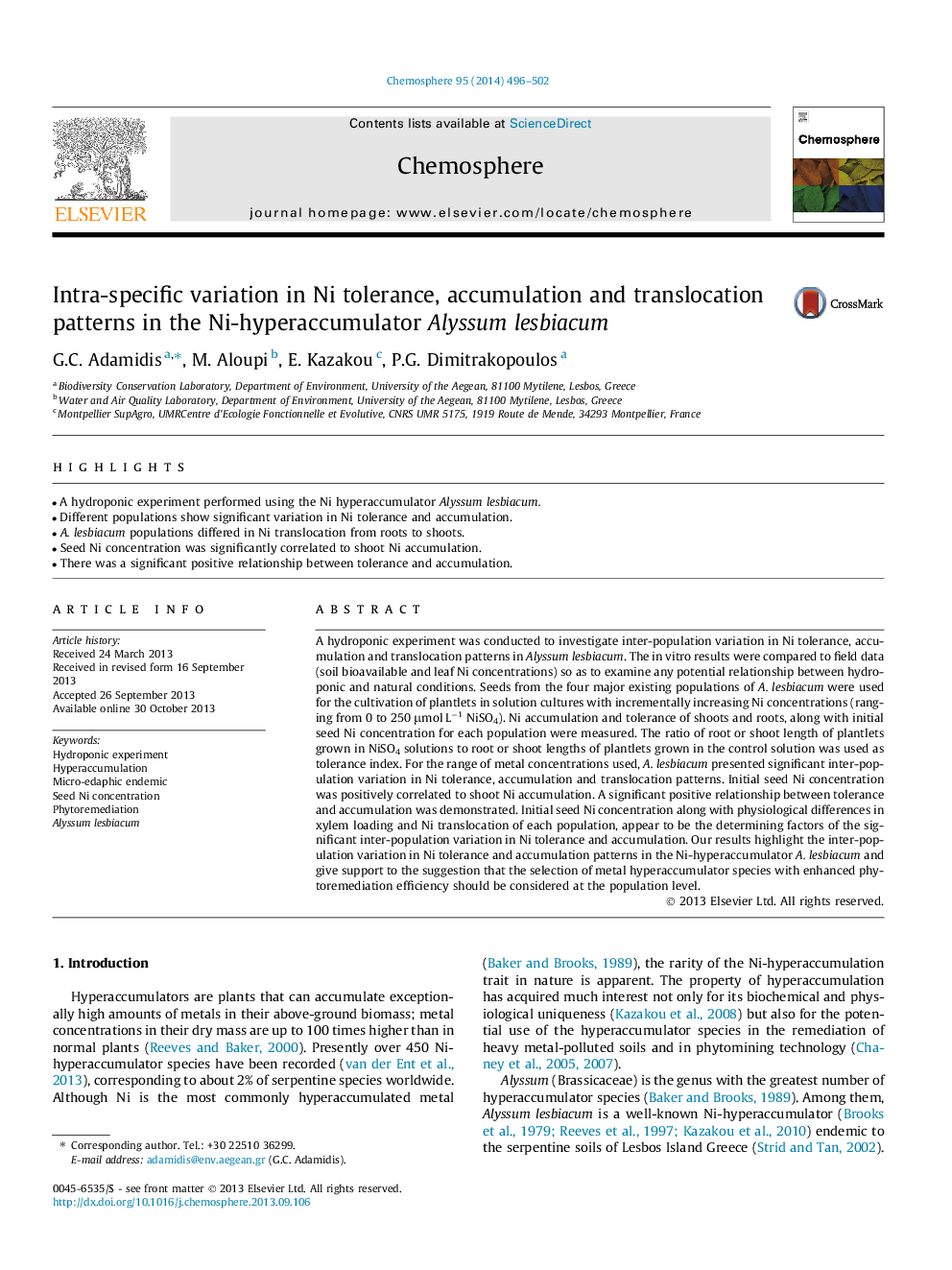| Article ID | Journal | Published Year | Pages | File Type |
|---|---|---|---|---|
| 6309884 | Chemosphere | 2014 | 7 Pages |
Abstract
A hydroponic experiment was conducted to investigate inter-population variation in Ni tolerance, accumulation and translocation patterns in Alyssum lesbiacum. The in vitro results were compared to field data (soil bioavailable and leaf Ni concentrations) so as to examine any potential relationship between hydroponic and natural conditions. Seeds from the four major existing populations of A. lesbiacum were used for the cultivation of plantlets in solution cultures with incrementally increasing Ni concentrations (ranging from 0 to 250 μmol Lâ1 NiSO4). Ni accumulation and tolerance of shoots and roots, along with initial seed Ni concentration for each population were measured. The ratio of root or shoot length of plantlets grown in NiSO4 solutions to root or shoot lengths of plantlets grown in the control solution was used as tolerance index. For the range of metal concentrations used, A. lesbiacum presented significant inter-population variation in Ni tolerance, accumulation and translocation patterns. Initial seed Ni concentration was positively correlated to shoot Ni accumulation. A significant positive relationship between tolerance and accumulation was demonstrated. Initial seed Ni concentration along with physiological differences in xylem loading and Ni translocation of each population, appear to be the determining factors of the significant inter-population variation in Ni tolerance and accumulation. Our results highlight the inter-population variation in Ni tolerance and accumulation patterns in the Ni-hyperaccumulator A. lesbiacum and give support to the suggestion that the selection of metal hyperaccumulator species with enhanced phytoremediation efficiency should be considered at the population level.
Keywords
Related Topics
Life Sciences
Environmental Science
Environmental Chemistry
Authors
G.C. Adamidis, M. Aloupi, E. Kazakou, P.G. Dimitrakopoulos,
